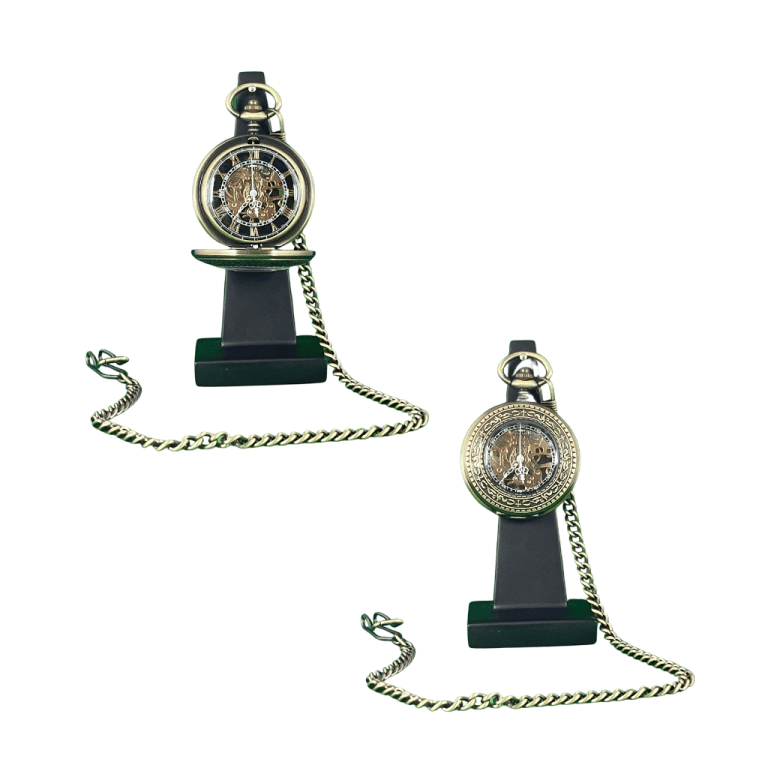If you live in the USA, you may catch yourself looking at the clock and keeping track of your appointments in a calendar. But, does every culture view time this way? Different cultures developed various views on time use. For example, what is usual in some Latin countries may be completely unacceptable in Western cultures. For instance, being tardy in the USA means losing money while Brazilians have a more laid-back attitude towards punctuality.
These unwritten rules cultures pass on to their children, nurturing their traditions and keeping them from fading. In this blog post, we will take a look at different ways cultures view time use, as well as how they perceive punctuality, waiting, and the time spent silent.
What is time in society and culture?
Time is an important element in society and culture. It was psychologist Robert Levine who analyzed different cultures and their attitude towards time. He found out that the more economically developed countries like the USA, Germany, or Japan are fast-paced. That is to say, they greatly value time, since “time is money”.
On the other hand, countries with poorly developed economies are slow-paced. Cultures such as the Middle East, Latin America, or Eastern Europe nurture a more relaxed attitude towards time. They are more family and socially oriented.
Sometimes, however, these orientations may not be as clear-cut. For example, even though the Japanese appreciate time and punctuality, they are a fast-paced living culture that views social relationships as important.
Thus, the way people behave towards time depends on their cultural traditions, beliefs, and socioeconomic status.
Timekeeping in different cultures
We’ve already mentioned that Western and Eastern cultures have different attitudes towards time. The same applies to how they track their time.
Western cultures (including some parts of East Asia, such as Japan) tend to measure their time by the clock. According to their understanding, each activity should have a precise beginning and end.
On the other hand, measuring time in Eastern cultures is event or personality-related. That is to say, they don’t let time interfere with their judgment. They will gladly prolong the meeting or schedule it for the next day if participants have family-related obligations. Each activity or event should have a natural beginning and end.
Different understandings of time come to attention when people from different cultural backgrounds come to have a formal meeting together. Cultures that measure time by the clock will expect all participants to be punctual, whereas event-time cultures wouldn’t be so strict. Therefore, different time understanding can lead to misunderstandings between cultures — such as the ideal time when members of a multicultural team are expected to arrive at a meeting.
Time orientation
The way we look at the different eras in time also reflects our time understanding. This is referred to as time orientation.
For example, nations with a long history that survived wars, had past achievements, or lived in monarchies hold on to the past more than nations with a relatively short history.
Therefore, certain cultures are past, present, or future-oriented.
We’ve prepared a more detailed description of each orientation below.
Past-oriented cultures
These cultures don’t have long-term perspectives and avoid risking by introducing changes.
Italy is an ideal example of a past-oriented country. Italians are known for their exquisite craftsmanship and artistic history. They stick to their past achievements and obtain new ones relying on the knowledge of their ancestors.
Moreover, Britain and China are past-oriented since they have a long history too. Like the Italians, they are proud of their past achievements and live their lives respecting their traditions and beliefs.
Interestingly, even though the Chinese are traditional and past-oriented, they do have a long-term perspective. They cherish their traditions yet carefully pave the way for the future of their heirs.
Present-oriented cultures
Present-oriented cultures include the majority of Latin American and African countries. For them, what happened in the past — should stay there. What’s more, they are laid back about future events. They give little attention to such events since they consider them uncertain and unknown. Therefore, these cultures rely on immediate results and tend not to have detailed plans for the future.
Future-oriented cultures
Logically, we can come to the conclusion that cultures that live their lives by the clock are future-oriented.
The USA is such an example.
They live in the present to the fullest — but are oriented towards future events. This may have to do with the fact that they are a relatively young country, at least compared to European countries. Besides, they are known to be thorough planners. They thoroughly plan their vacations, meetings, and important events beforehand. Time waste is simply an unwanted concept.
Chronemics
Do you and your friends meet strictly on time, or is it acceptable to arrive late in your culture? The answer lies in the role of time in communication, also known as — chronemics. People and organizations in different cultures have different understandings of the use of time in communication, specifically, nonverbal communication. We’ll single out two types of such time use: polychronic time (P-time) and monochronic time (M-time).
Event or personality-related cultures use the polychronic, whereas by-the-clock cultures use the monochronic approach. We need to grasp this to be able to function in culturally diverse environments.
In line with that, people who often migrate or travel long distances for work have a greater chance of learning about and adapting to culture-based different time use — simply because they are exposed to such cultural diversity more often.
Polychronic approach
People with an inclination towards the polychronic time approach are emotion and event-driven. Therefore, they are more people-oriented because they put family and social life before work. This time use is prevalent in Latin American, African, and Middle East countries. Their attitude towards work includes doing several things at once without paying too much attention to time. P-time people don’t stick to the schedule so rigidly. In addition, polychronic organizations are externally focused and their primary concern is customer satisfaction. They follow market trends and prioritize customer feedback.
At work, P-time people tend to:
- Have a flexible attitude towards schedules and plans,
- Group tasks together and perform them simultaneously,
- Build strong relationships with people,
- Not judge tardiness,
- Frequently change, delete, or procrastinate items on their To-Do lists,
- Prioritize tasks and adjust them to their needs.
Monochronic approach
This approach includes doing one thing at a time, strictly sticking to schedules, and making thorough plans. People who are comfortable with this time use are task-oriented. Therefore, they don’t let anyone and anything interfere with their daily goals. Monochrons mostly belong to Western cultures (North Americans and Western Europeans), as well as some Asian countries such as Japan, Taiwan, and South Korea. However, on the whole, these cultures are more a combination of monochronic and polychronic time use. For example, when it comes to business and deadlines, they incline towards monochronic time use. At the same time, when it comes to activities that include building relationships with people, they incline towards the polychronic approach. In other words, these activities are spontaneous and not thoroughly planned. Another important point to add is that the beginning and ending times of after-hour events are not set for cultures following the monochronic approach.
At work, M-time people tend to:
- Never multitask,
- Thoroughly plan and schedule their activities,
- Not tolerate tardiness,
- Stay at work until everything is finished,
- Never miss deadlines,
- Not waste time making small talks at work.
Monochronic and polychronic cultures in business
Monochronic and polychronic cultures may have misunderstandings in business encounters. For instance, polychrons don’t have a defined time frame for each meeting. Eastern people start their business meetings by getting to know their partners more and giving them time to introduce themselves. Their meetings last until they achieve goals in the course of nature. For them, exchanging business cards is a whole process that takes time. Conversely, North Americans, who are monochronic, like to get to the point and achieve goals in a defined time frame. They have no time to waste.
For a business, it’s of the utmost importance to establish a time culture. According to research, around 20% of expats who moved abroad for business returned home early because they couldn’t adjust to a different culture. This usually happens because expats go abroad unprepared and unaware of cultural differences, which include differences in cultural perceptions of time. They assume business rules are the same everywhere. What’s more, executives may expect expats to get the work done without considering such cultural differences.
An example of a cross-cultural misunderstanding between a monochronic and a polychronic culture
A North American flies to Istanbul for an annual meeting with his Turkish partners. The North American — punctual as he is — finds it very odd to see people mingling and chatting during work time. He also seems surprised that the meeting didn’t start on time and that his partners extended it spontaneously. What he doesn’t know is that Turkish people put great value on building social relationships. Thus, good relationships between coworkers are of the essence. Turkish people run meetings on the spur of the moment, without forcing them to end at a certain time to achieve instant goals.
Different cultures should be aware of the cultural differences in order to enjoy their encounters more and obtain mutual benefits. Hence, you should always research the cultures of your teammates (if they are different from your own), to avoid surprises.
💡 If you work in a multicultural team, you may also find this blog post useful → How to overcome cultural and language barriers in the workplace
How to prevent cross-cultural misunderstanding when doing business
For the purpose of establishing a successful overseas partnership, some ground rules need to be defined. Companies that have a positive outcome when sending people abroad follow specific rules:
- They only send culturally literate people or people who find it easy to adapt to changes.
- They send people who voluntarily agree to work abroad, after reaching a mutual decision.
- Expats and hosts should get familiar with each other’s customs to avoid misinterpretations.
- Executives should prepare their expats in advance.
- Expats should dismiss any stereotypes about certain cultures (e.g. All Chinese people eat dog meat — this is incorrect, as only a minority located in Guangxi and Guangdong regions does so).
When understanding each other and respecting cultural differences, both sides can generate innovative ideas. Moreover, expats should not be afraid to communicate with locals even though their local language may not be advanced. Once they start communicating with locals more, they will likely start adapting to culture-specific elements of their everyday lives with greater ease — including how they should perceive time in this culture.
Credited to: https://clockify.me/














